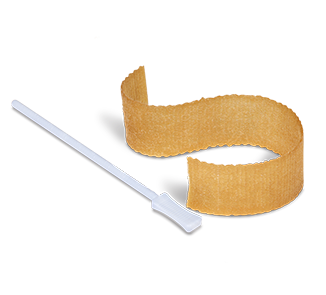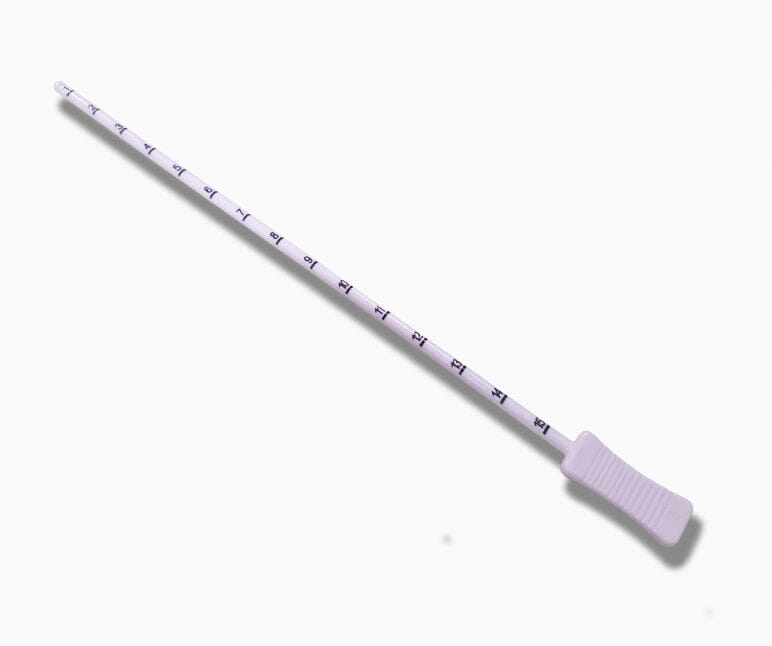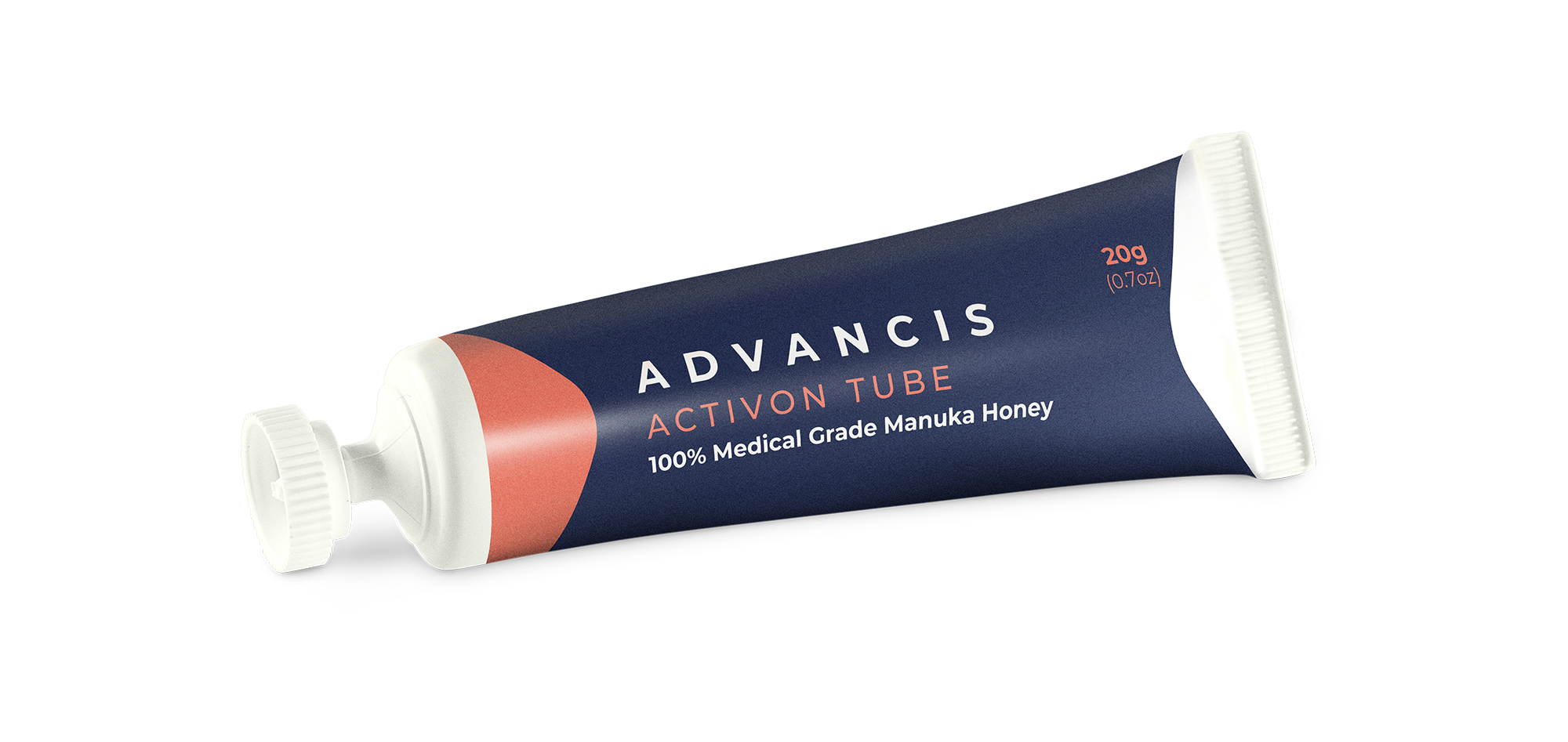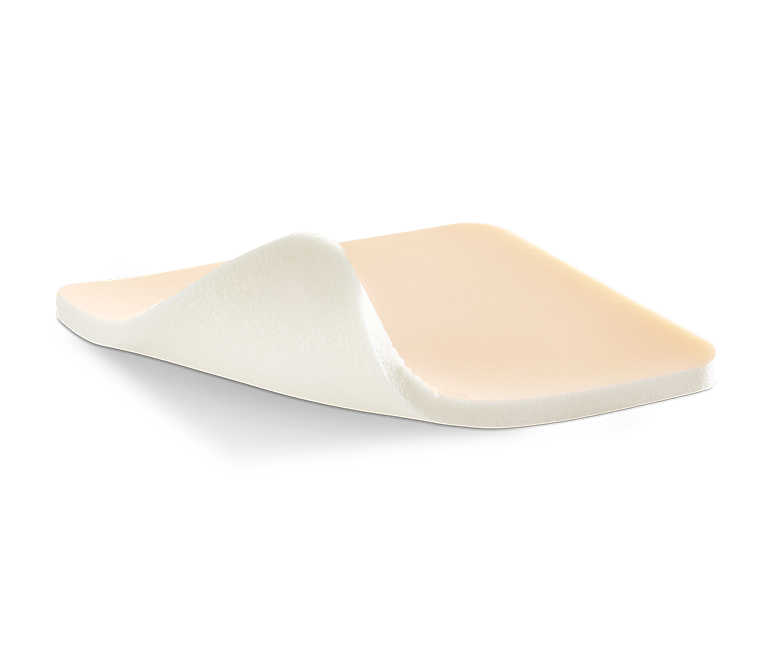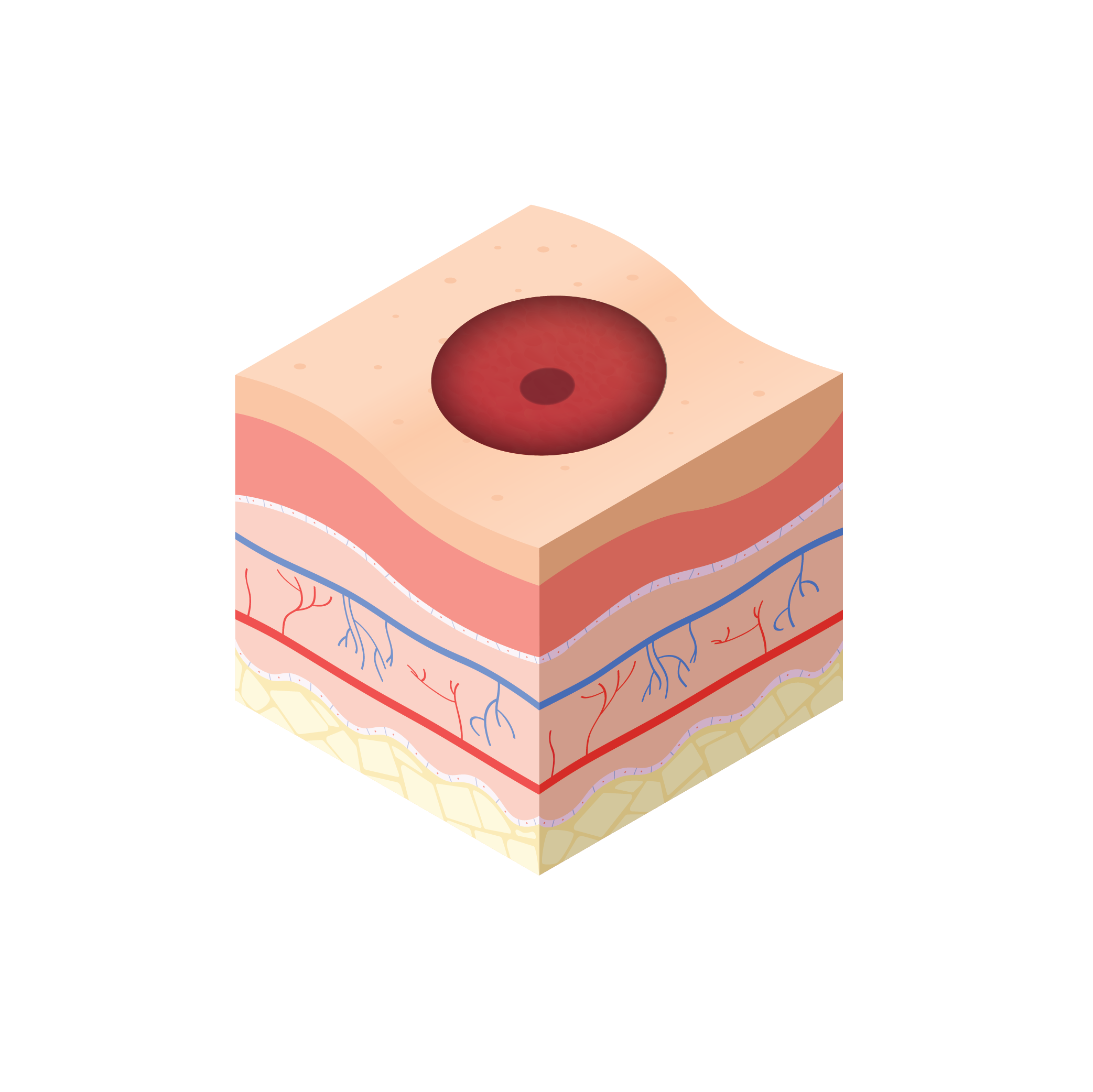
Što je kavitet
Ne postoji standardizirana definicija za kavitete što može otežati pružanje adekvatno zbrinjavanje utemeljeno na dokazima. Kaviteti se rangiraju kao relativno plitke rane ne dublje od 2 cm, rane dublje od 2cm¹, duboke rane koje otkrivaju unutarnje strukture kao što su facije², tetive, mišići i kosti, te odnedavno i rane koje se protežu ispod dermisa³.
Zbrinjavanje kaviteta često predstavlja niz kliničkih i praktičnih izazova za zdravstvene djelatnike. Često je nužno napraviti debridman zbog prisutnosti biofilma, infekcije i kontrole eksudacije. Nedostupnost, kao osobina kaviteta, može predstavljati praktične izazove u smislu vizualizacije i tretmana dna rane, dokumentiranja stanja rane, te stoga može zahtjevati prilagodbu pristupa koji se koriste za ostale rane, bez kaviteta.
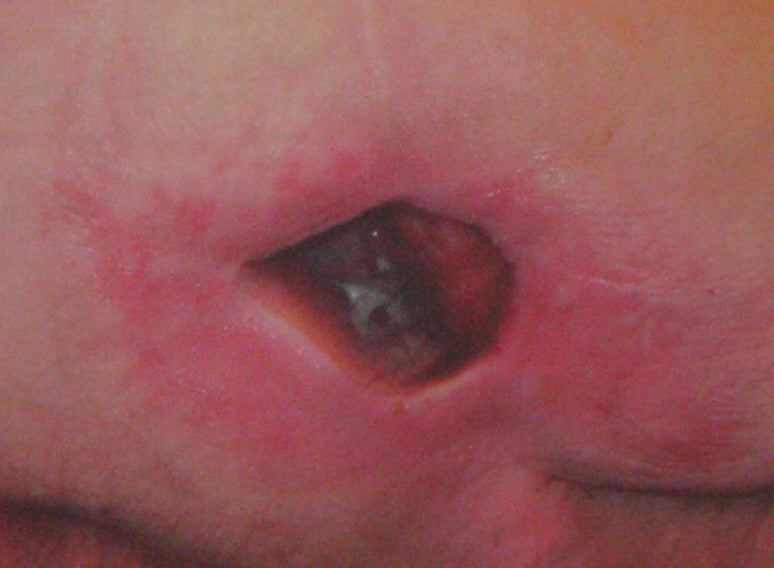
Ciljevi liječenja
Ciljevi liječenja kaviteta uključuju debridman rane kada je moguće, održavanje optimalne vlažnosti korištenjem upojnih obloga koje su prilagodljive kavitetu, upravljanje eksudatom, zaštitu okolne kože, bezbolnu aplikaciju i uklanjanje obloga, te prevenciju infekcije.
Products that treat Cavity Wounds

Learn More
With the Education HubWant to learn more about a range of different wound types and how they can be treated? Visit our free Education Hub.
Wound Types
Select a wound type below to discover more...
-

Necrotic tissue is dead or devitalised non-viable tissue which impedes wound healing.
-

Slough refers to the yellow/white material in the wound bed.
-
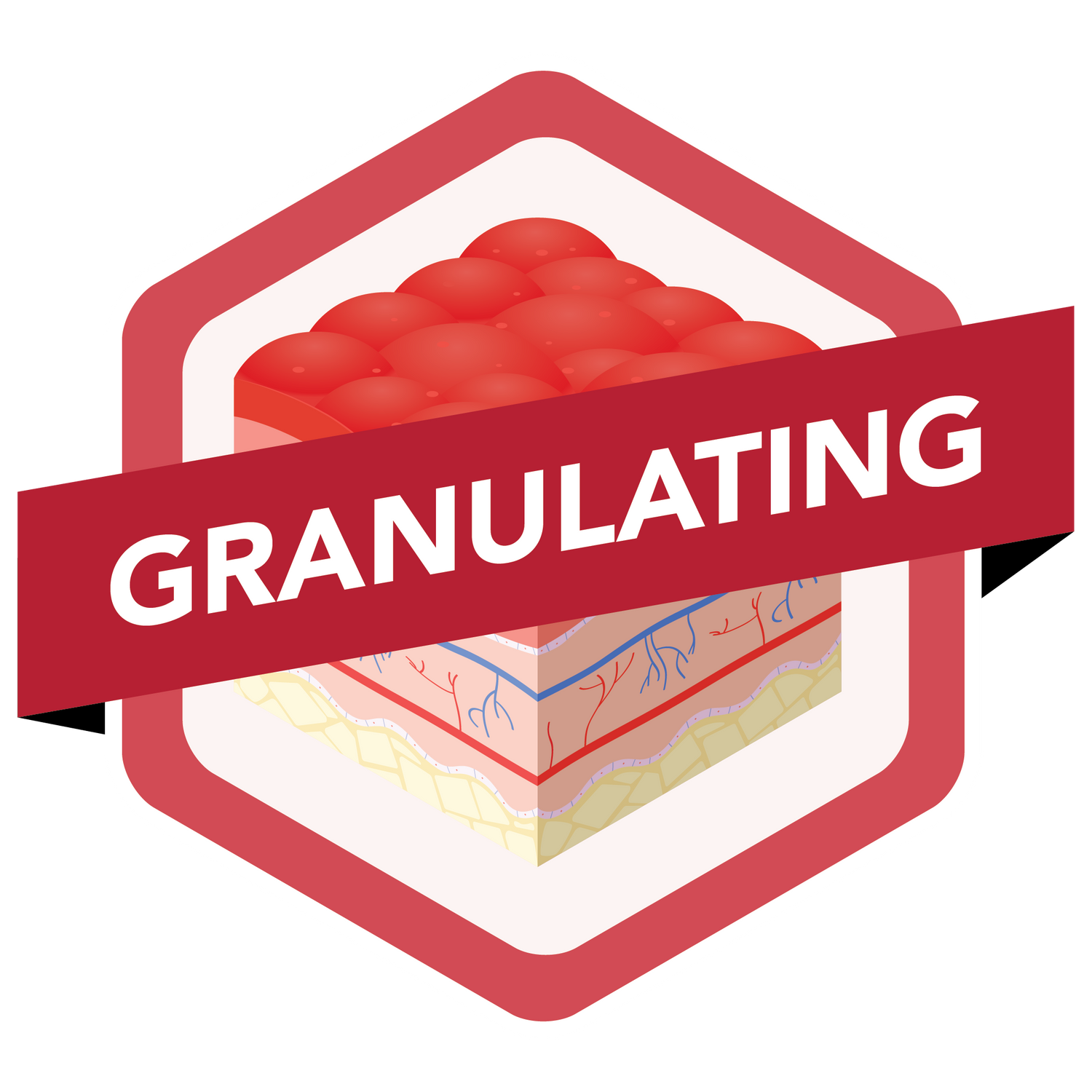
Granulation describes the appearance of the red, bumpy tissue in the wound bed as the wound heals.
-

Epithelialisation is the final stage of wound healing and is pink/white in colour.
-

A fungating wound develops when cancer that is growing under the skin breaks through the skin and creates a wound.
-

A scar may appear flat, lumpy, sunken, or coloured.
-

Infection can develop in any type of wound and is usually accompanied by pain, inflammation and swelling.
-
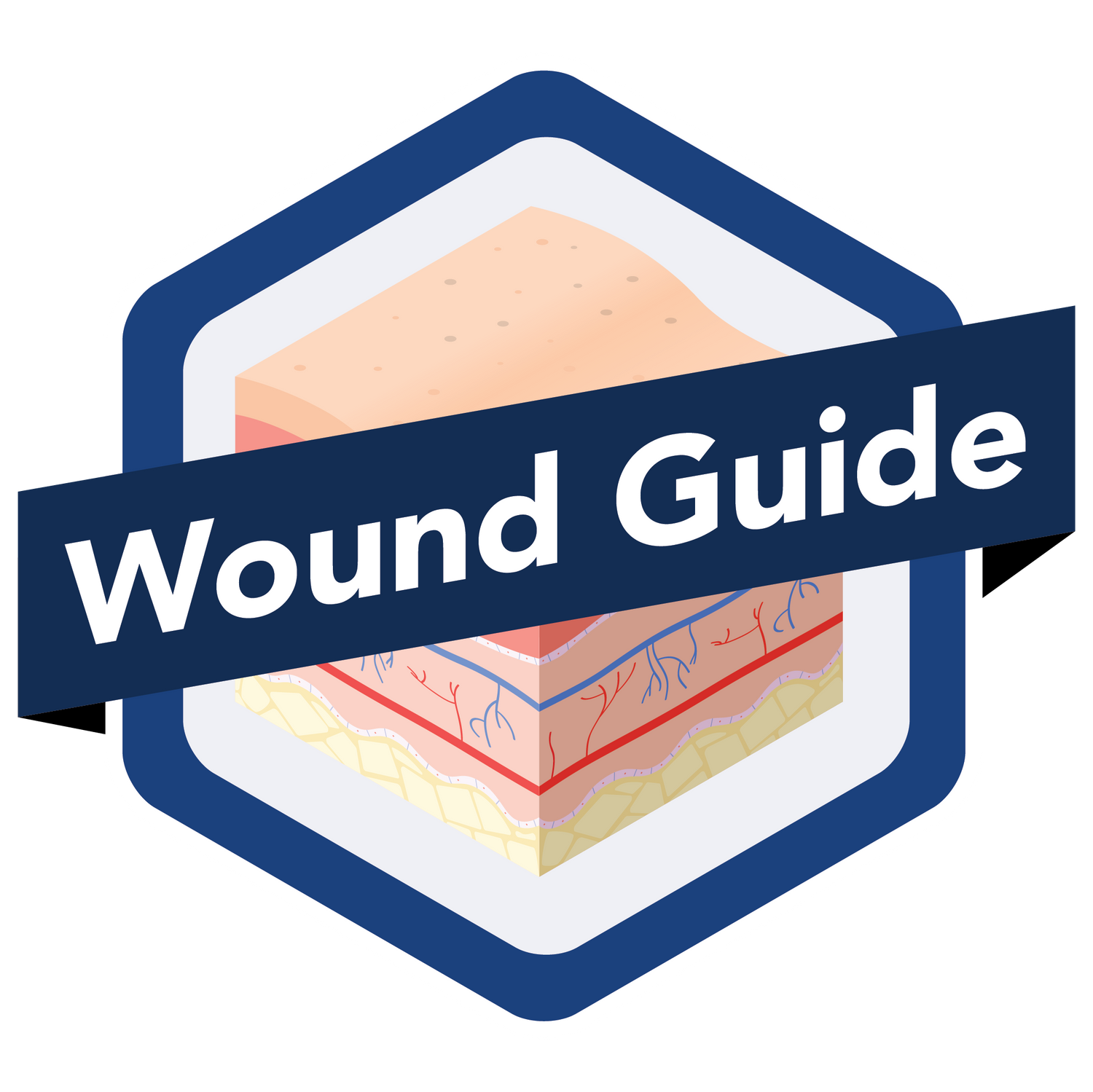
Return to the Wound Guide Information Page
References
1. Chaloner D, Poole M (1995) Cavity wound management in the community. Br J Nurs 4(10): 556–61
2. Williams C (1997) Treatment of cavity wounds. Practice Nursing 8(13): 31–33
3. Timmons J, Cooper P (2008) How to systemically assess a patient with a cavity wound. Wounds UK Supplement (4)2: 4–10
4. www.woundcare-today.com. (n.d.). Wound Care Today - Article: Addressing the challenges of cavity wounds in clinical practice - Wound Care Today. [online] Available at: https://www.woundcare-today.com/journals/issue/wound-care-today/article/addressing-challenges-cavity-wounds-clinical-practice [Accessed 27 Jun. 2022].
5. Cooper P (2006) How to probe a wound during assessment to help determine treatment options. Wound Essentials (1): 87–9
6. Timmons J, Dugid K, Pirie G et al (2008) The management of a patient with a cavity wound. Wounds UK Supplement (4)2: 11–18
7. Vowden K (2016) Defining, assessing and managing cavity wounds. Wounds UK 12(1): 18–23


